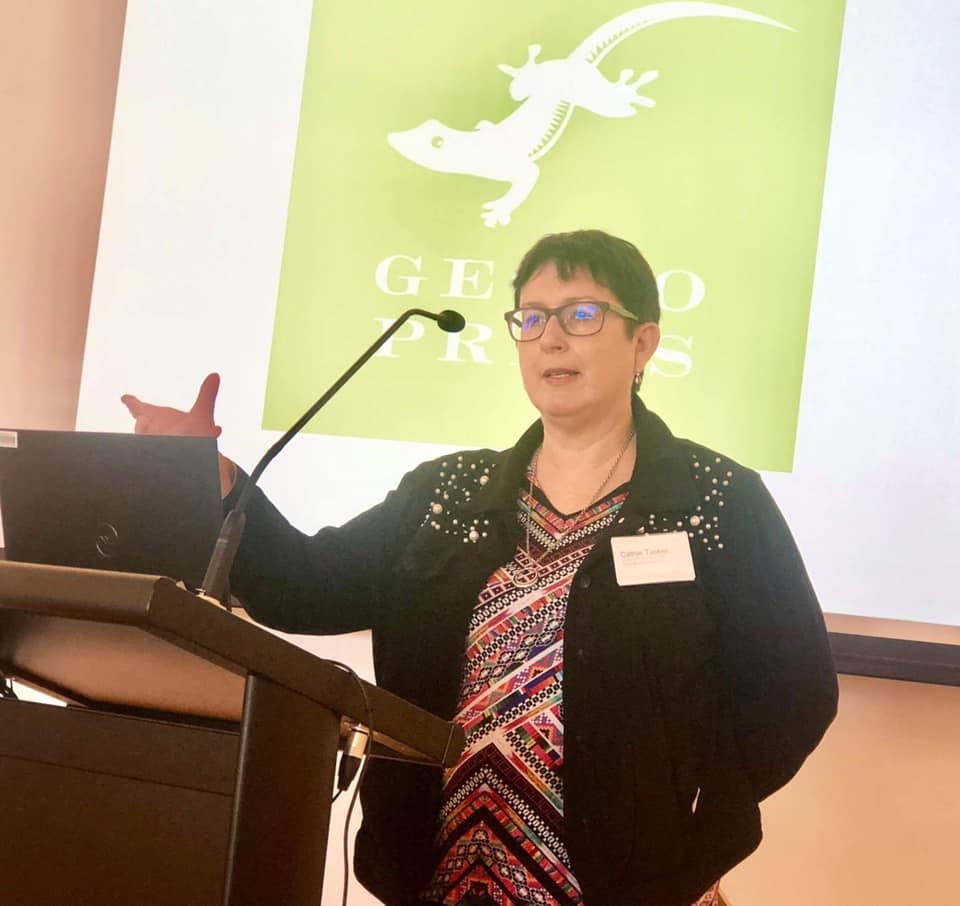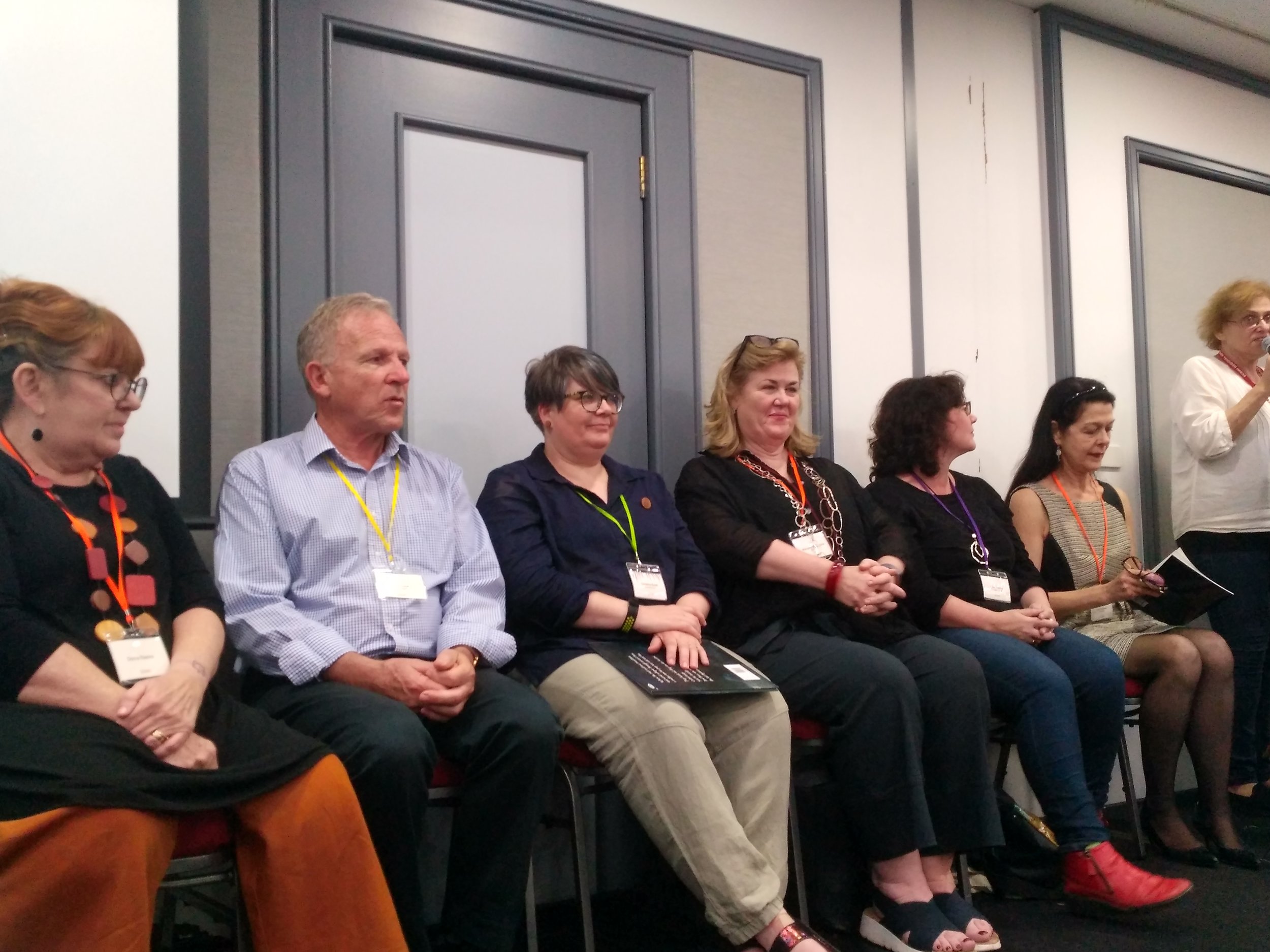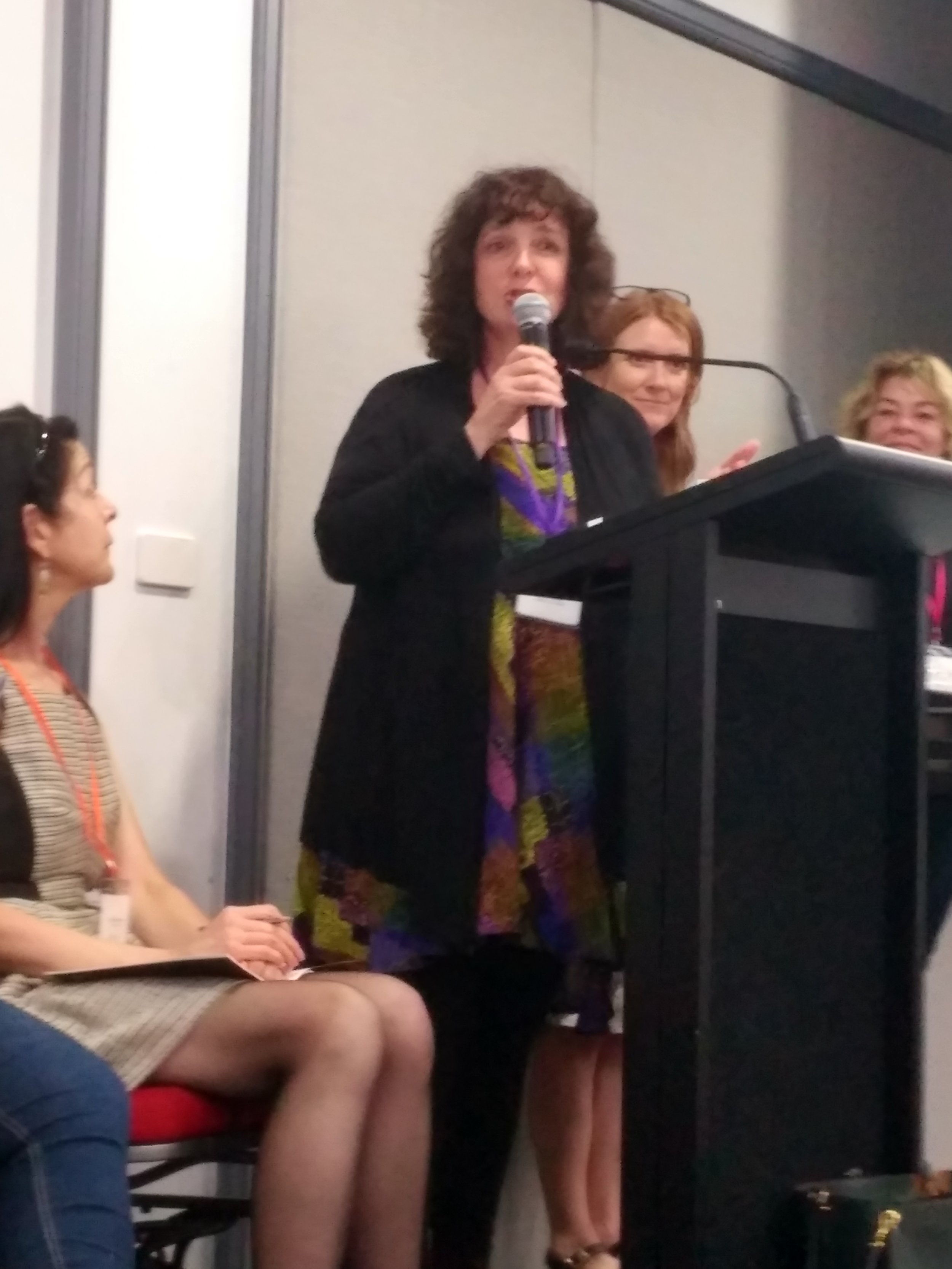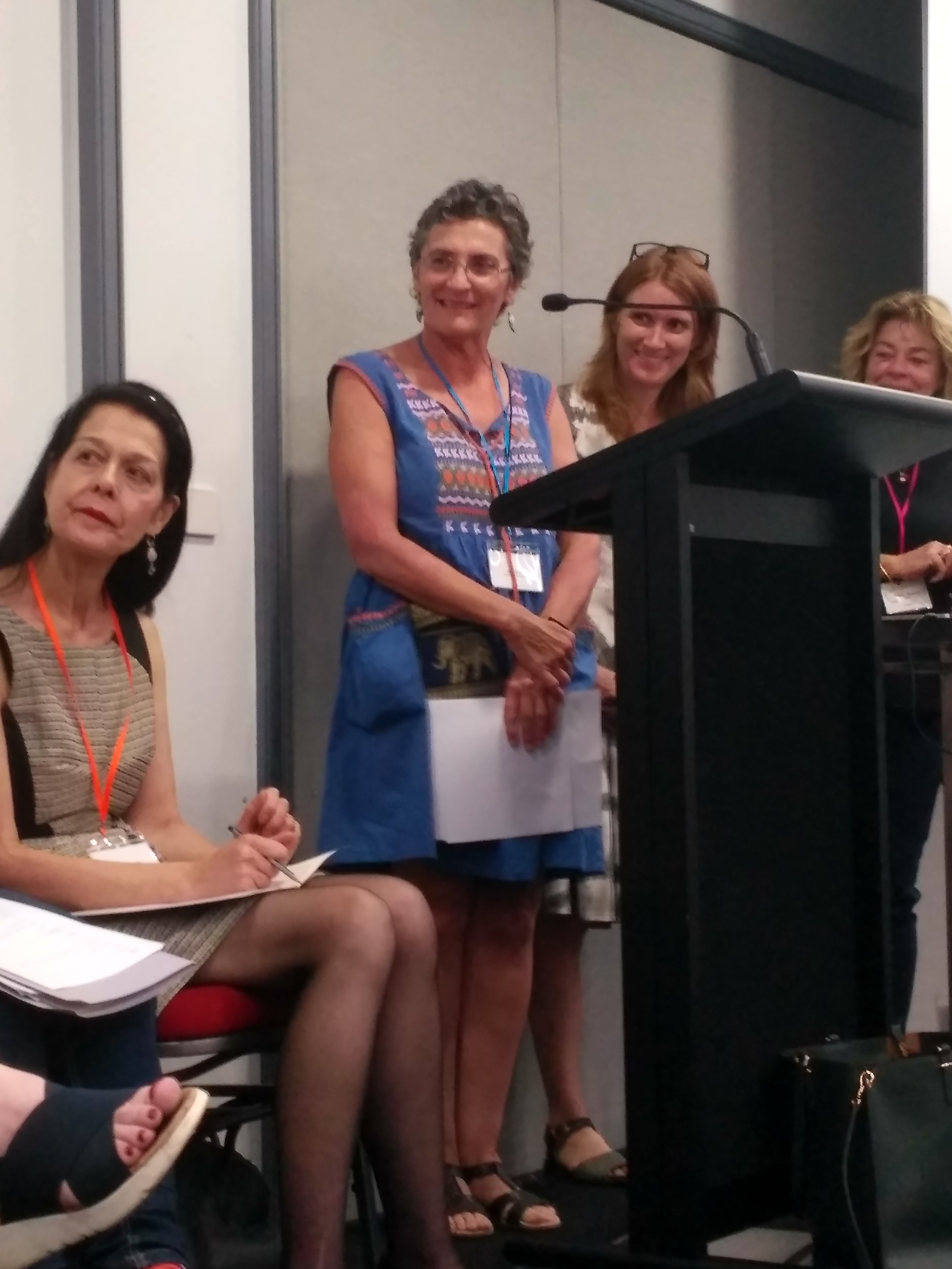How to take your MG and YA dialogue to the next level
Zoe Walton’s practical masterclass on Writing Great Dialogue provided an excellent opportunity to learn, reflect and ultimately improve our dialogue writing skills. Zoe mentioned that the dialogue in a story is often one of the first things that makes a book stand out to a publisher.
Zoe Walton with some of her favourite examples of books with great dialogue
Zoe’s top tips for writing great dialogue:
Punctuation is important. Revision of basic punctuation rules and styles were addressed regarding attribution tags, when to use a full stop versus a comma.
Currently, publishers generally prefer simple attribution tags as they essentially disappear and don’t intrude upon the story. For example, ‘said’ is most preferred, but also ‘asked’ ‘replied’ etc.
Zoe recommended the book Self-editing for fiction writers and discussed the preference for strong verbs, and few/no adverbs.
You don’t always need a dialogue tag, as long as the context clearly indicates who is speaking, however, it may be preferable to use especially with younger readers who are still learning the conventions of language.
Use beats (actions to break up dialogue) effectively – to illuminate your story, control pacing, show context and who is doing what. Don’t overuse or insert irrelevant actions and keep consistent (e.g. if remove hat early in the dialogue, remember to pick it up on the way out)
Find a balance between simple dialogue tags, no tags and beats.
Search your writing for your bad habits in beats – e.g. actions you frequently overuse for your characters, such as everyone nods or shrugs or sighs or has many ways of smiling or you always talk about what people’s eyes are doing.
“THE PURPOSE OF DIALOGUE IS TO REVEAL CHARACTER AND SHOW INTENTION”
The purposes of dialogue include to reveal character and show intention in all our scenes. However, dialogue is not real speech, it is designed to give the illusion of real speech. Real speech has all sorts of filler words, half-finished sentences, interruptions, etc. Also, people don’t always say what they mean, or they lie. Use the things we do in real life speech, but wisely and sparingly, so that it sounds real (not like a pre-memorised speech). When writing dialogue, ask yourself:
How can dialogue inform character and plot?
What characters say (or don’t say) and how they say it tells a lot about them
Can use dialogue to foreshadow, throw red herrings, propel plot, build suspense, precipitate the climax, etc.
Authenticity
Dialogue needs to be authentic to the character, e.g. age, era, socio-economic class, education level, etc
What does the character like or dislike?
What do they eat, wear, do, etc?
Aim to write dialogue that shows a rounded character, e.g. not just bossy or formal etc, different elements just like in a real person.
When revising your dialogue, ask yourself:
Would this character say this?
Would a teen or child say this?
Zoe also recommended another book called The Magic Words by Cheryl Klein.
Zoe getting class members to ‘speak easy’ aka write dialogue
Exercises
There were many opportunities to practise skills during the masterclass. For example, attendees were asked to consider their protagonist and how they would have learned the language they use:
What was the environment and household like that they grew up in?
What is their favourite book, band, movie, song on the radio?
Who do they hang out with – e.g. peers, adults, younger kids?
Do they have distinct characteristics from their influences?
What do they like to do? Remember characters like people, have multiple aspects, e.g. do they run marathons but also hide chocolate in the cupboard?
Remember, your characters likes and dislikes will inform their dialogue.
Now create two columns:
in column 1, list things about your character (from the questions above and more)
in column 2, write some dialogue they might say that stems from the point in column 1.
Final tips
Don’t overuse accents
In general, don’t use odd phonetic spelling for a character’s dialogue – it can confuse younger readers and not always be interpreted as you intend
Find words or phrases that are different from how other characters speak.
Remember, the same character will act and speak a bit differently when they are with different people (e.g. with parent, friend, teacher)
Be wary of using slang and do not use stereotypical language, e.g. if someone has English as a second language, do not use language that could be seen as insulting, in fact they may be more likely to have a formal manner of speaking depending on how and where they learnt English.
When displaying a character’s thoughts, either keep in normal font or in italics, never in quotation marks.
Be very aware to never use racist, sexist or ableist language (e.g. words like crazy, dumb, idiot, etc).
Make sure your characters are unique individuals, not stereotypes. Never portray characters in a way that may be harmful to readers.
Avoid info-dumps – weave back story in or remove it.
Zoe recommended another book called The Art of Editing.
The masterclass concluded with a reminder to listen to conversations all around us and some advice based on the work of Joseph Conrad: every word must carry the story forward, and it must be carried faster and faster and more intensely.
by Cherri Ryan
#SCBWISyd










